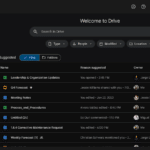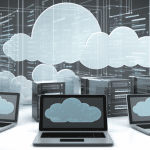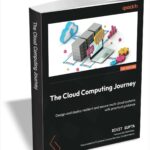80 percent of security exposures involve misconfigurations

A new report based on data gathered from over 40 million exposures presenting high-impact risks to millions of critical business entities, finds that identity and credential misconfigurations represent 80 percent of security exposures across organizations.
The report, from exposure management specialist XM Cyber based on data analyzed by the Cyentia Institute, shows a third of these exposures put critical assets at direct risk of breach -- an attack vector actively being exploited by adversaries.
Cloud security and speed -- how fast do your processes need to be? [Q&A]

Moving to the cloud offers many benefits for businesses, but it doesn't remove the need to keep your systems secure. The tools that make the cloud fast and attractive for business can also be used by attackers.
We spoke to Anna Belak, director, Office of Cybersecurity at Sysdig to discuss the pain points that she sees security teams dealing with today, where those problems come from, and how to address them around process and skills rather than just looking at the tech side.
Google Drive finally gets dark mode on the web

It has been an extraordinarily long time coming, but Google has finally decided to flip the switch on dark mode for Drive on the web.
Much like AI is at the moment, the spread of a dark mode option for apps and websites was something of a cultural and technological phenomenon a few years ago. Quite why it has taken Google such a long time to jump back on this particular bandwagon is anybody's guess, but dark mode will be welcomed by Google Drive users none the less. Here's what you need to know.
Enterprises not getting full value from their data

According to a new report, 73 percent of IT leaders are still struggling to transform data into delivering significant business value.
The survey of 150 UK IT leaders by cloud consultancy Appsbroker & CTS finds 91 percent have a specific mandate from their board or executive team to make their organization more data-driven and data-centric.
Cloud computing -- The first step to an effective data modernization strategy

Many organizations realize the benefits that lie within the data they collect daily. This modern approach to data empowers businesses to leverage data for innovation and monetization while at the same time enhancing security and privacy. While this may seem like a conundrum as companies have traditionally buried their data deep into IT architecture to prevent it from being accessible, even by the employees, today it is possible to have the best of both. This process starts with the cloud.
The healthcare sector is witnessing a swift surge in cloud adoption. By 2028, it is expected to grow at a Compound Annual Growth Rate (CAGR) of 18.74 percent. This trend of rapid adoption can be seen in the financial services sector too, where organizations are moving to the cloud at an accelerated pace.
Securing your SaaS applications: Best practices in a cloud-native era

Software as a Service (SaaS) has emerged as a cornerstone for organizations seeking flexibility, scalability, and efficiency in their operations. With the convenience of accessing applications over the internet, SaaS adoption has surged, offering unparalleled opportunities for innovation and growth. According to recent data, the global SaaS market is projected to reach $282.20 billion this year, reflecting the growing reliance on cloud-based software solutions. However, alongside these benefits come inherent security challenges that necessitate a proactive approach to risk management.
The widespread shift to remote work and the rapid adoption of cloud-based solutions, including SaaS applications, have introduced significant security challenges for organizations.
Get 'The Cloud Computing Journey' (worth $35.99) for FREE

As the need for digital transformation and remote work surges, so does the demand for cloud computing.
However, the complexity of cloud architecture and the abundance of vendors and tools can be overwhelming for businesses. The Cloud Computing Journey addresses the need for skilled professionals capable of designing, building, and managing scalable and resilient cloud systems to navigate the complex landscape of cloud computing through practical tips and strategies.
Peace of mind: Cloud is key in scaling systems to your business needs

Meeting the demands of the modern-day SMB is one of the challenges facing many business leaders and IT operators today. Traditional, office-based infrastructure was fine up until the point where greater capacity was needed than those servers could deliver, vendor support became an issue, or the needs of a hybrid workforce weren’t being met. In the highly competitive SMB space, maintaining and investing in a robust and efficient IT infrastructure can be one of the ways to stay ahead of competitors.
Thankfully, with the advent of cloud offerings, a new scalable model has entered the landscape; whether it be 20 or 20,000 users, the cloud will fit all and with it comes a much simpler, per user cost model. This facility to integrate modern computing environments in the day-to-day workplace, means businesses can now stop rushing to catch up and with this comes the invaluable peace of mind that these operations will scale up or down as required. Added to which, the potential cost savings and added value will better serve each business and help to future-proof the organization, even when on a tight budget. Cloud service solutions are almost infinitely flexible, rather than traditional on-premises options and won’t require in-house maintenance.
Transforming pain into profit -- modern end-user computing

In the era of end-user computing, the terms ‘next gen’ and ‘revolutionary’ are commonly used to refer to the shift away from outdated legacy Virtual Desktop Infrastructure (VDI) systems to a modern, cloud-first approach that combines on-premises and cloud environments. End-user computing (EUC) has historically been a costly IT expense, but this hybrid multi-cloud approach is a cost-effective performance booster. Contemporary solutions and strategies, including cloud-first VDI implementation, enable these systems to vastly simplify the construction, operation, and management of EUC environments, and revolutionize end-user computing.
IT leaders often face significant challenges when adopting a hybrid multi-cloud strategy, primarily due to the intricate nature of managing different private and public clouds. These complexities are further exacerbated by ongoing issues stemming from legacy VDI systems. In order to turn this source of frustration into a source of proficiency and profit, CIOs and IT leaders must look to modernize their approach.
Embracing cloud repatriation: Strategies for successful workload migration

A recent study by Citrix revealed that 25 percent of UK organizations have chosen to migrate more than half of their cloud-based workloads back to on-premises infrastructures. This phenomenon, known as cloud repatriation, is gathering significant momentum and forcing enterprises to re-evaluate their cloud strategies.
While the cloud once promised cost savings, scalability, and flexibility, many organizations have found themselves grappling with unforeseen expenses, security concerns, performance issues, compatibility problems, and service downtime.
Five questions to ask before you choose a cloud provider

The cloud landscape has never been more complex. Research reveals that the majority of EMEA IT decision makers (ITDMs) have hybrid cloud strategies (68 Percent) and even more (72 Percent) have relationships with multiple public cloud providers (72 Percent). Every provider offers different services each with their own pros and cons, and this complexity can be challenging to manage without the right underlying data architecture.
Given the cost, compliance and business risk implications of cloud, due diligence is increasingly important. But for organizations to work out what they need from their cloud service providers (CSPs), they must understand their own data first.
Syncing of cloud passwords opens businesses to cyberattacks

A new report reveals that 67 percent of businesses routinely synchronize most of their users’ passwords from their on-premises directories to their cloud counterparts. This poses substantial security risks by creating a gateway for attackers to hack these environments from on-prem settings.
The report from Silverfort shows that in the rush to the cloud security gaps stemming from legacy infrastructure, misconfigurations, and insecure built-in features create pathways for attackers to access the cloud, significantly weakening a company's resilience to identity threats.
Microsoft cites continuous innovation of Windows 11 and app compatibility improvements as it kills Test Base for Microsoft 365

Microsoft has announced that is it transitioning Test Base for Microsoft 365 to end-of-life in just a few weeks. The EOL process for the service started at the beginning of March and will be complete by the end of May.
As Test Base for Microsoft 365 is not something that everyone will have heard of, Microsoft explains that it is "a cloud-based app testing service on Azure that evaluates the compatibility of applications with new Windows releases or updates". The company has decided that it is no longer needed because so much work has been done with Windows 11 that app compatibility issues are rare.
Only 10 percent of companies have full observability into cloud environments
A new study shows that in 2024, the biggest challenge to gaining observability into cloud-native environments -- cited by 48 percent of respondents -- is lack of knowledge among the team. This is up from 30 percent in 2023.
The report from Logz.io shows only 10 percent of organizations are utilizing full observability, that is, observing the real-time status of every component of the entire technology stack.
What can we expect from the third decade of cloud computing? [Q&A]

Cloud has been a cornerstone of the computing industry for many years. As it enters its third decade in 2024, economic pressures, anti-monopoly moves and more mean things will look different for hyperscale providers.
We spoke to Amol Dalvi, VP of Product of Nerdio, to discuss what we can expect to see over the next 10 years.
Recent Headlines
Most Commented Stories
Windows 12.1 is everything Windows 11 should be -- and the Microsoft operating system we need!
Apple Intelligence will launch in beta and that’s unacceptable for a trillion-dollar company
© 1998-2024 BetaNews, Inc. All Rights Reserved. Privacy Policy - Cookie Policy.